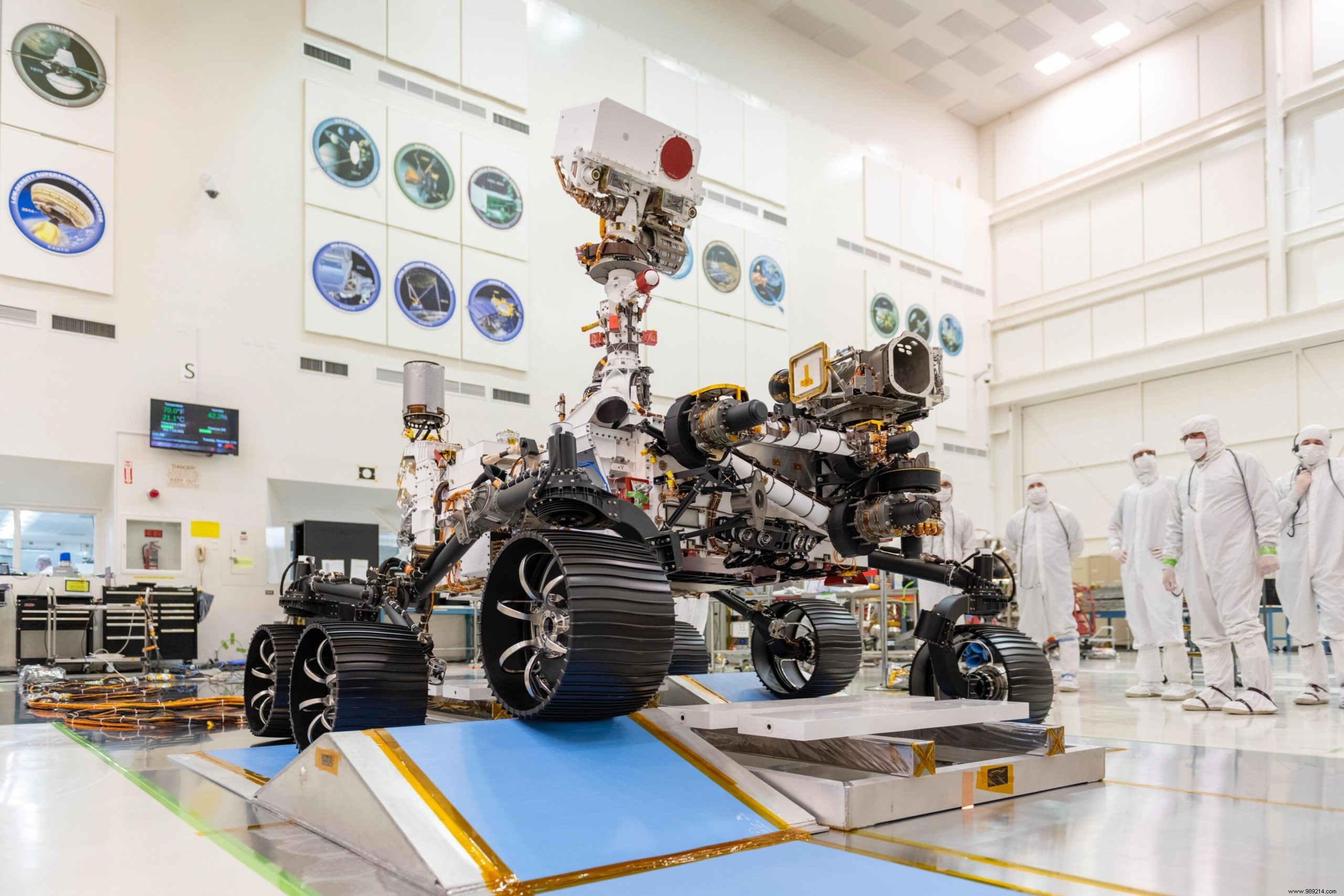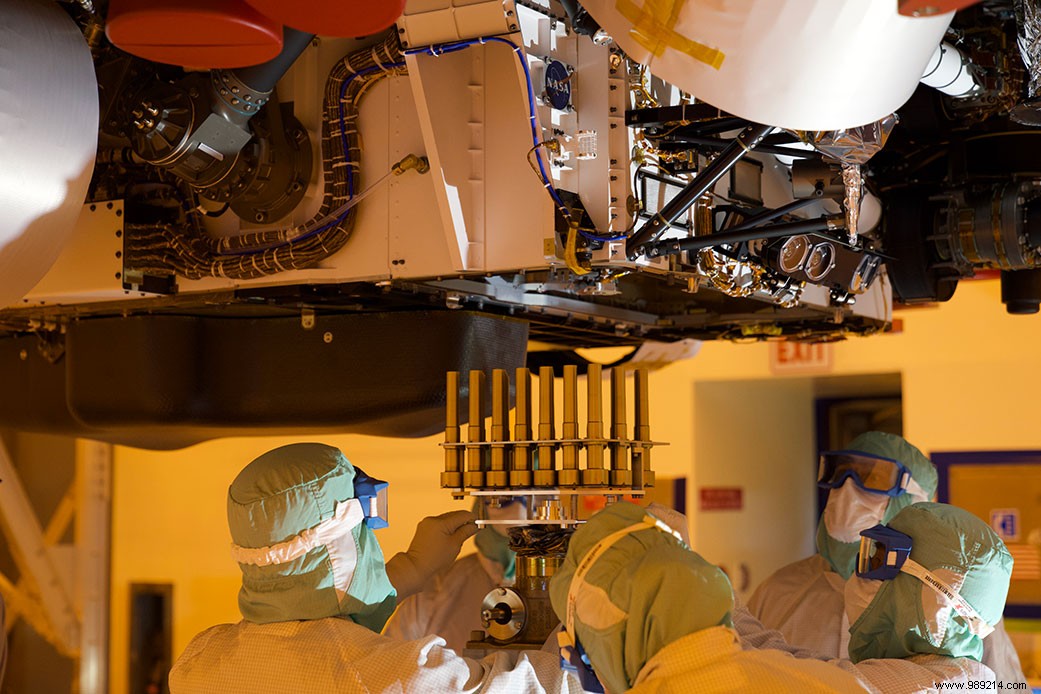As part of a joint mission, NASA and the European Space Agency plan to bring back Martian rocks collected directly on site in the early 2030s. :search for traces of past life. Here's how NASA made sure these future samples won't be contaminated.
July 20 marked the start of the long-awaited Mars 2020 mission. on February 18, 2021. Its objectives will be to characterize the geology of the planet and its past climate, but also and above all to search for traces of past life buried in the ground.
To do this, the rover will take care of probing several sites thought to contain rocks mainly formed in an aqueous medium. Once these have been selected, small core samples five centimeters deep will be taken for analysis. But that's not all.
There are also plans to cache some of these samples in tubes for future return to Earth . They can thus be analyzed in the laboratory with state-of-the-art instruments that are far too massive to integrate the ship. As part of this mission, called Mars Sample Return, NASA will collaborate with ESA.
That being said, one of the main challenges for the engineers, ahead of this mission, was to ensure that the samples taken were intact when they arrived. on Earth . The sample tubes (43 in total) had to be light and sturdy enough to survive the demands of such a round trip, but also 'clean' enough for scientists to be certain to analyze content. 100% Martian .
"Compared to Mars, our planet is covered with life" , explains Ken Farley, of the Mars 2020 project at Caltech (Pasadena). " We needed to remove all of these traces so that any remaining evidence could be detected and differentiated with confidence when these first samples are returned " .

Obviously this is not the first time that NASA has to deal with this type of challenge. This engineering dates back to the Apollo 11 mission. When Neil Armstrong, Michael Collins and Buzz Aldrin returned to Earth with their 21.8 kilogram samples taken from the Moon's Sea of Tranquility in 1969, they had been placed and transported in two sterilized aluminum boxes the size of a briefcase.
Apollo's rock crates, however, only needed to keep their cargo 'virgin' for about ten days - from lunar surface to return to Earth - before being transferred to the laboratory. The Perseverance sample tubes must preserve the scientific value of their contents for more than ten years.
Made primarily of titanium, each tube is just under 15.2 centimeters long and weighs less than 57 grams . A white outer coating will prevent heating by the sun which could potentially change the chemical composition of the samples. Laser etched serial numbers on the exterior will help the team identify each tube and its contents.
The tubes are also the product of extreme cleanliness standards. All of NASA's planetary missions involve demanding processes to prevent the introduction of organic, inorganic, and biological materials from Earth. However, since these tubes could contain evidence that life once existed elsewhere in the Universe, the Mars 2020 team needed to reduce – even further – the possibility that they could harbor terrestrial clues that could complicate the scientific process. .
“To achieve the kind of science the mission is aiming for, we needed to limit the total amount of terrestrial organic compounds in a given sample to less than 150 nanograms. For a particular set of organic compounds – those that are highly indicative of life – we were limited to less than 15 nanograms for each sample says Ian Clark, who participated in the sample tube "cleaning" process at JPL.
For your information, a nanogram is one billionth of a gram. Also, to meet such stringent specifications, engineers had to rethink their processes. " We did all of our assembly in a 'hyper-cleanroom', which is basically a cleanroom within a cleanroom “, continues the engineer. Between each assembly step, sample tubes were cleaned with blasts of filtered air, rinsed with deionized water, and ultrasonically cleaned with acetone, sopropyl alcohol, and others exotic cleaning agents ” .
By the time the 43 sample tubes were selected, each had generated over 250 pages of documentation and three gigabytes of images and video.

In terms of timing, the mission will consist of sending a new lander to Mars in 2026, the Sample Retrieval Lander (SRL). Once landed (summer 2028), it will then deploy the Sample Fetch Rover whose objective will be to collect the sample tubes set aside by Perseverance. These will then be placed in a small rocket, the Mars Ascent Vehicle (MAV), which will take off in the spring of 2029 to place itself in orbit around Mars.
Meanwhile, in the summer of 2028, ESA will send a probe to collect the samples in orbit, before bringing them back to Earth in 2032.